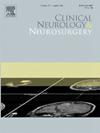Validation of PROMIS score as a measure of postoperative success following decompressive surgery for Chiari I malformation
IF 1.8
4区 医学
Q3 CLINICAL NEUROLOGY
引用次数: 0
Abstract
Objective
Evaluating postoperative outcomes in Chiari I malformation represents a challenge. Patient-Reported Outcomes Measurement Information System (PROMIS) Physical Health (PH) and Mental Health (MH) metrics are highly reliable measures of patient-reported health status commonly used and validated in spine and stroke populations. We investigate the validity of PROMIS-PH and PROMIS-MH in tracking postoperative success following decompressive surgery for Chiari I malformation.
Methods
Adult patients undergoing decompressive surgery for Chiari I malformation at our institution were identified. Prospectively administered pre- and postoperative PROMIS-PH and MH scores were of interest, from which postoperative score improvement was calculated. The current standard for discerning surgical success, postoperative physician gestalt, was retrospectively assigned as “improved” or “unimproved” following review of the clinical documentation at a time point coinciding with the postoperative PROMIS score. Univariable logistic regression and receiver operative characteristic (ROC) analyses were performed to validate postoperative PROMIS improvement as a metric for clinical success.
Results
One hundred thirteen patients were identified (mean follow-up: 14.4 months). Seventy-four (65.5 %) patients experienced clinical improvement according to physician gestalt assessment. Postoperative PROMIS-PH score change was superior in the “improved” patients (improved: 8.5, unimproved: −2.5), p < .001. Logistic regression demonstrated PROMIS-PH to be an independent predictor of clinical improvement, with OR of 1.44 (95 % CI: 1.27–1.70). ROC area was 0.852 with mean clinically important difference of 3.0. PROMIS-MH was not a satisfactory predictor of surgical success (ROC area: 0.740).
Conclusion
Postoperative PROMIS-PH score improvement serves as a responsive and valid metric for trending postoperative outcomes in the Chiari I population.
求助全文
约1分钟内获得全文
求助全文
来源期刊

Clinical Neurology and Neurosurgery
医学-临床神经学
CiteScore
3.70
自引率
5.30%
发文量
358
审稿时长
46 days
期刊介绍:
Clinical Neurology and Neurosurgery is devoted to publishing papers and reports on the clinical aspects of neurology and neurosurgery. It is an international forum for papers of high scientific standard that are of interest to Neurologists and Neurosurgeons world-wide.
 求助内容:
求助内容: 应助结果提醒方式:
应助结果提醒方式:


